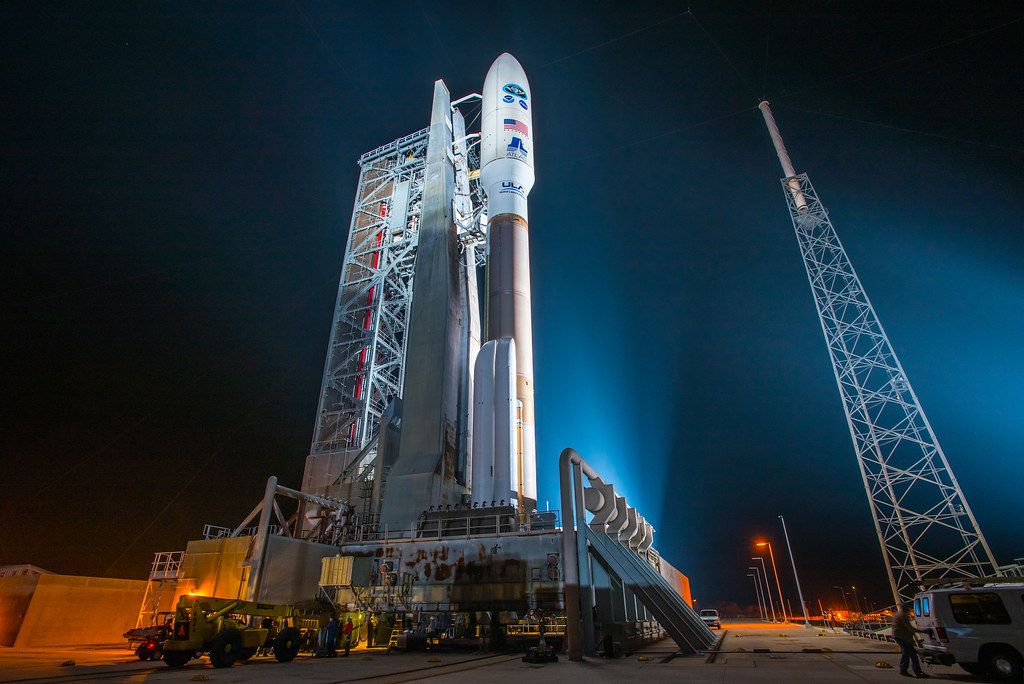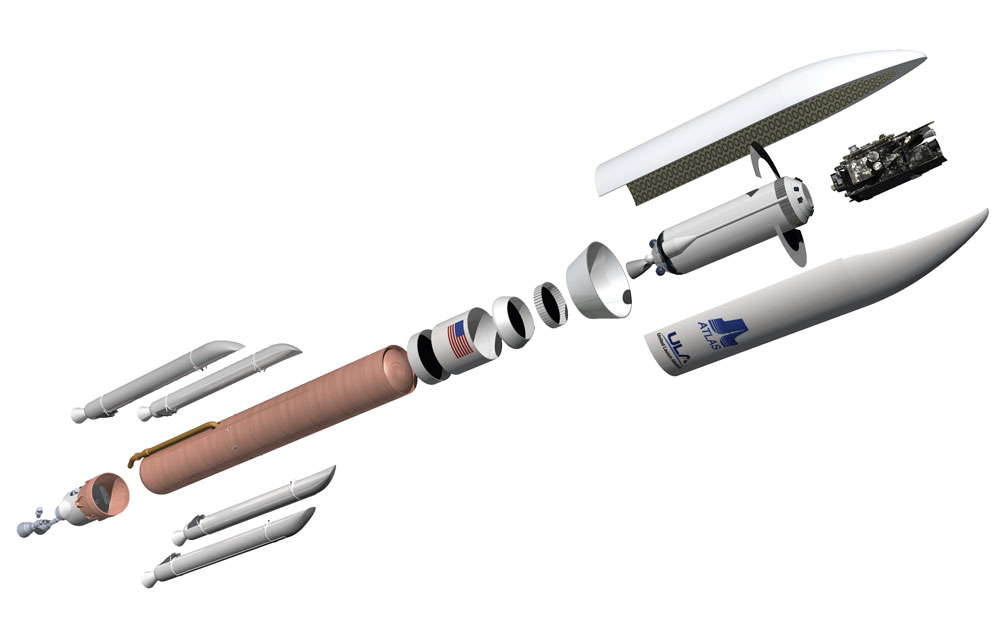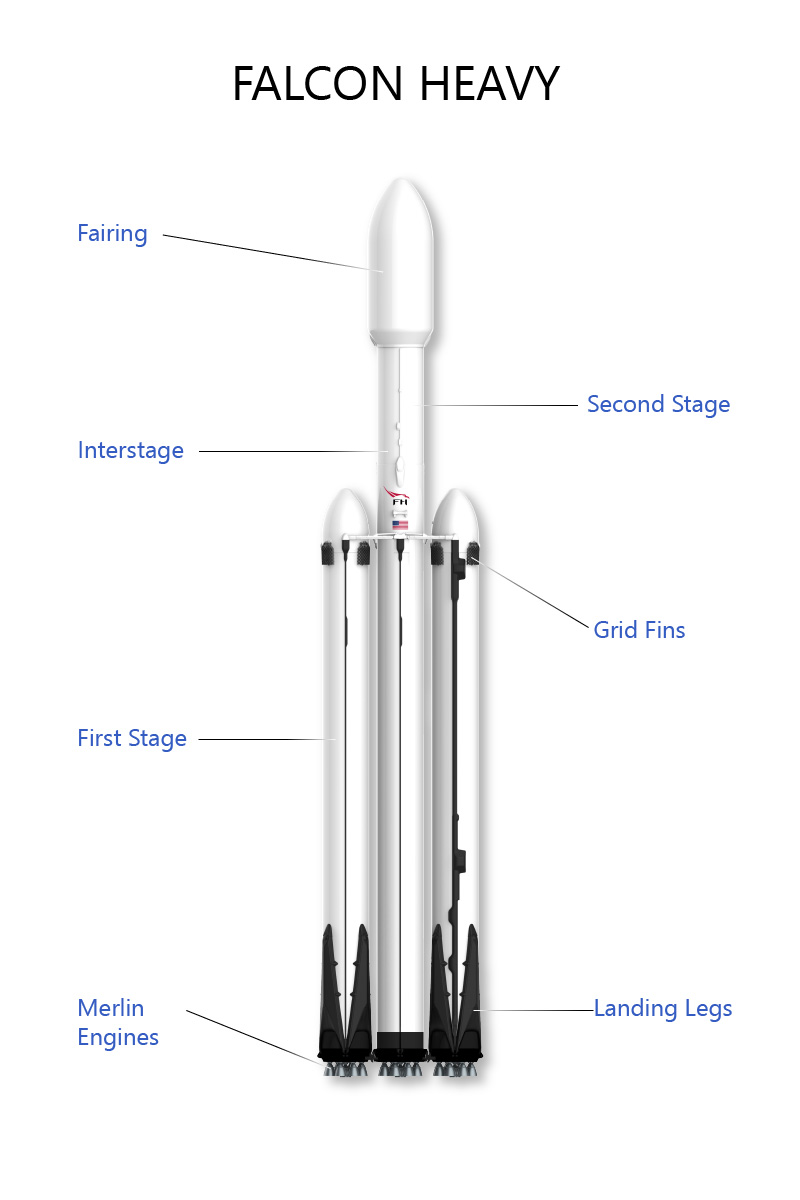GOES-R Series Launch Vehicles Overview

See the Road to Launch Image Gallery.
The GOES-R, GOES-S, and GOES-T launch vehicle is an Atlas V 541 expendable launch vehicle (ELV). The term expendable launch vehicle means each vehicle is only used once. The three numbers in the 541 designation signify a payload fairing, or nose cone, that is approximately 5 meters (16.4 feet) in diameter; four solid-rocket boosters fastened alongside the central common core booster; and a one-engine Centaur upper stage.
GOES-R launched aboard an Atlas V 541 rocket from Space Launch Complex-41 at Cape Canaveral Air Force Station, Florida, on November 19, 2016. GOES-S also utilized an Atlas V 541 when it launched from the same location on March 1, 2018.
GOES-U will launch aboard a SpaceX Falcon Heavy rocket.
Prime Contractors
NASA Kennedy Space Center awarded the launch services contract for the GOES-R and GOES-S satellites to United Launch Alliance of Centennial, Colorado, in April 2012. United Launch Alliance was awarded the GOES-T launch services contract in December 2019
On Sept. 10, 2021, NASA selected Space Exploration Technologies (SpaceX) to provide launch services for the GOES-U satellite.
Atlas V 541 Launch Vehicle Specifications
|
|||
 |
Stage 1: Atlas V Rocket: Fuel and oxygen tanks that feed an engine for the ascent; powers spacecraft into Earth orbit. | ||
 |
Solid Rocket Motors: Used to increase engine thrust; four total. | ||
 |
Stage 2: Centaur: Fuel and oxidizer and the vehicle's "brains"; fires twice, once to insert the vehicle-spacecraft stack into low Earth orbit. | ||
 |
Payload Fairing: Thin composite or nose cone to protect the spacecraft during the ascent through Earth's atmosphere. | ||
Falcon Heavy Launch Vehicle Specification
The Falcon Heavy rocket is composed of three reusable Falcon 9 nine-engine cores whose 27 Merlin engines together generate more than five million pounds of thrust at liftoff, equal to approximately eighteen 747 aircraft.
- HEIGHT: 229.6 feet (70 meters)
- MASS: 3,125,735 pounds (1,420,788 kilograms)
- FAIRING: Protects satellites during delivery to LEO, GTO and beyond
- INTERSTAGE: Composite Connects first, second stages, All-pneumatic separation
- FIRST STAGE: Liquid oxygen and kerosene propellants, High strength aluminum-lithium alloy
- MERLIN ENGINES: Engine-out reliability, 5,130,000 lbf of thrust at sea level, 5,548,500 lbf of thrust in vacuum
- SECOND STAGE: In-space start capacity, Powered by one MVac engine
- GRID FINS: Aids precision landing
- LANDING LEGS: For landing rocket safely back on Earth after takeoff
Falcon Heavy information and image courtesy of SpaceX

